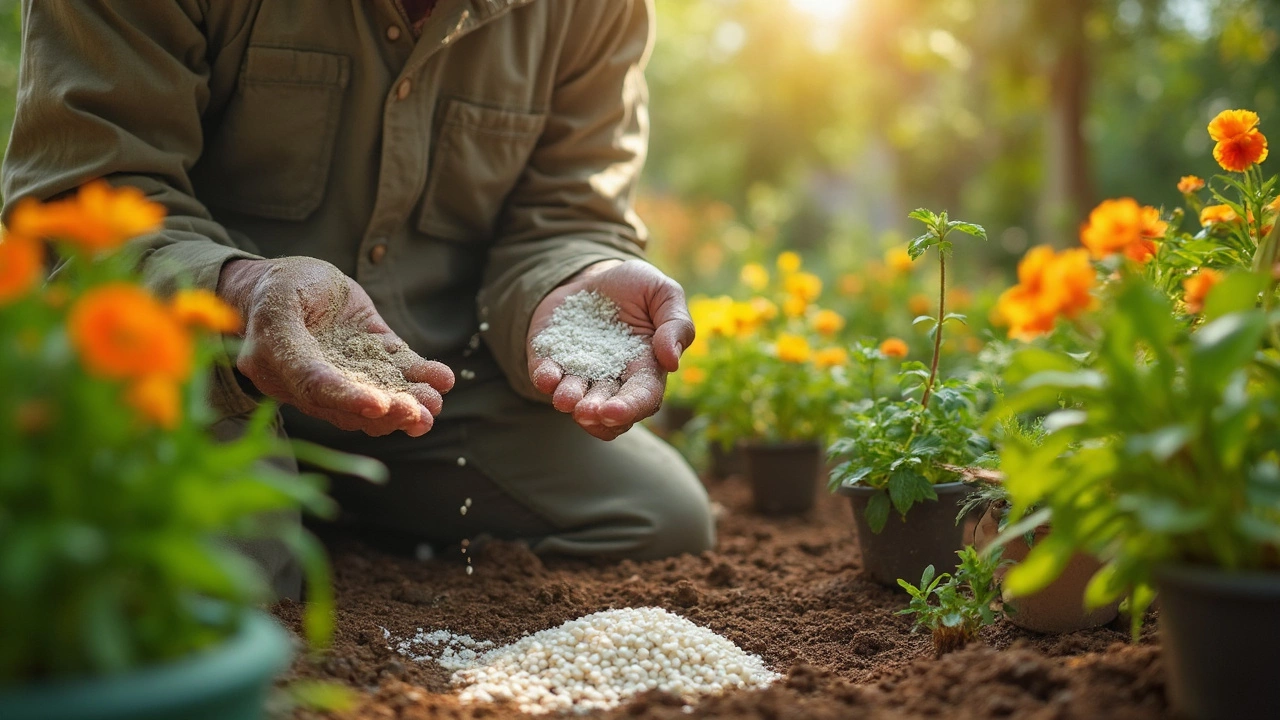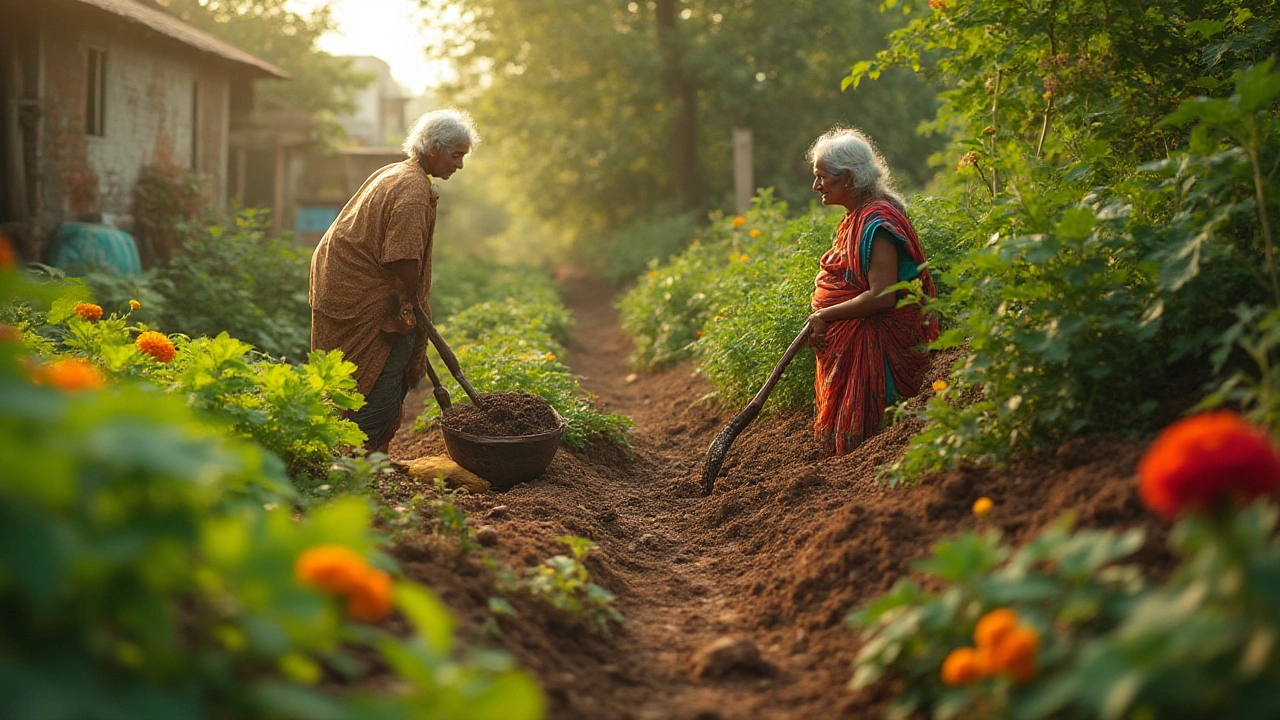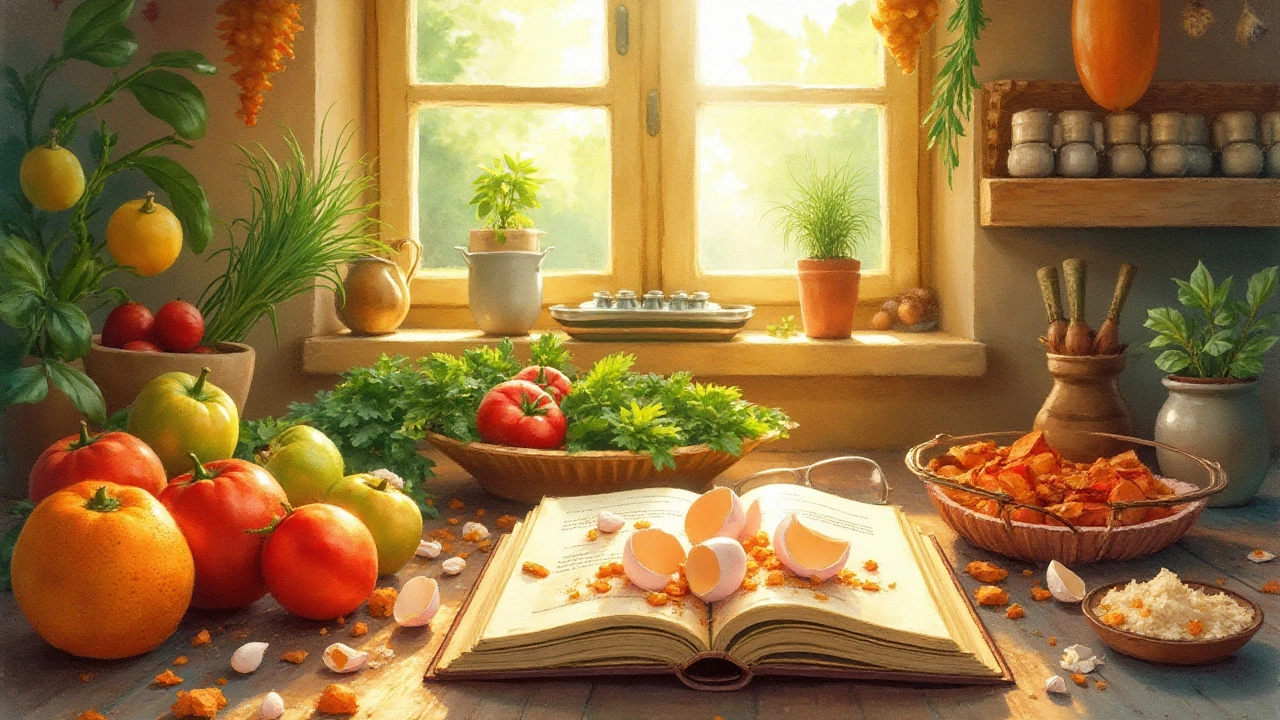Fix Depleted Garden Soil: Practical Steps to Rejuvenate Your Bed
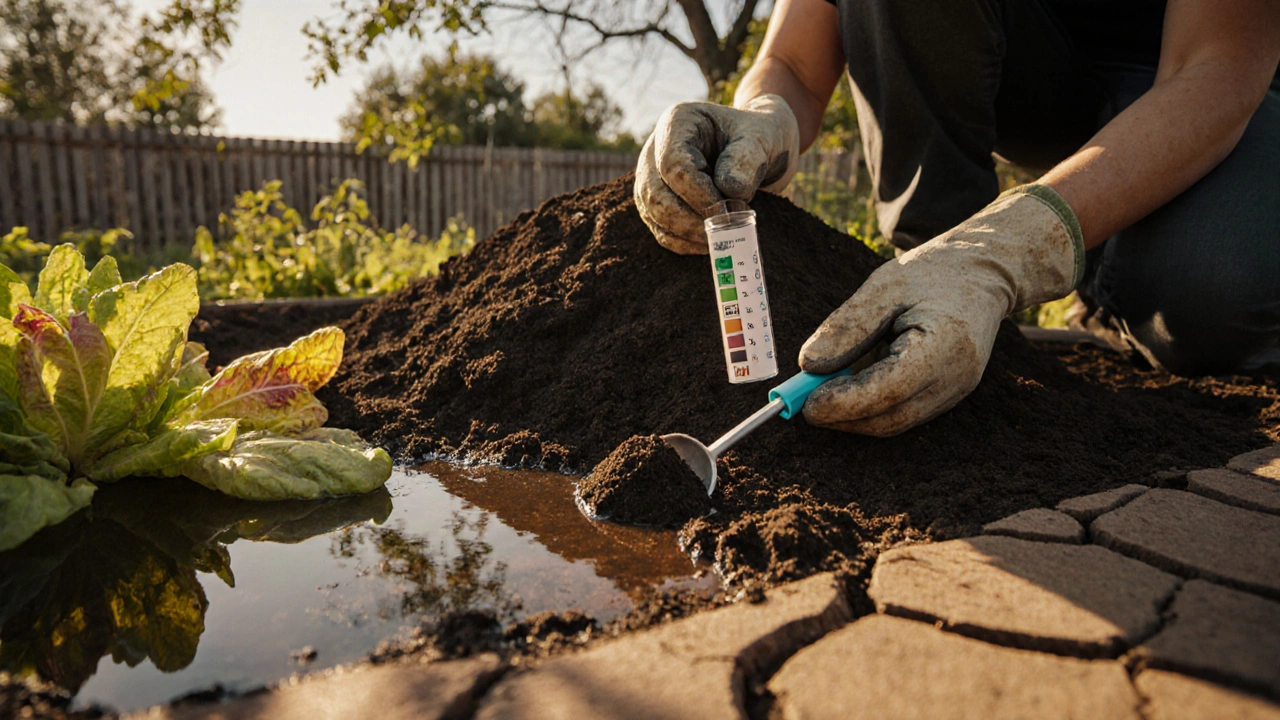
Soil Amendment Calculator
Calculate the right type and amount of soil amendments based on your garden bed size and soil test results.
Recommended Amendments
Based on your soil test results and garden size
When your garden beds start to feel hard, water runs off quickly, and plants look tired, the culprit is often garden soil is a living matrix of minerals, organic matter, water and air that supports plant growth. Over‑use, erosion, or a lack of nutrients can leave it depleted, making it difficult for roots to access food and moisture. The good news? Re‑energising soil is a series‑of‑small‑steps process that anyone with a spade can follow. Below you’ll find a clear roadmap to turn tired earth into a fertile playground for vegetables, flowers or herbs.
Key Takeaways
- Test your soil’s pH and nutrient levels before you start amending.
- Boost organic matter with compost, mulch or well‑rotted manure.
- Consider biochar or rock dust for long‑term structure and nutrient retention.
- Use cover crops and diverse plantings to feed soil microbes.
- Introduce earthworms and avoid compaction for lasting health.
Step 1 - Diagnose the Problem
Before you toss in any amendment, get a baseline. A simple DIY test kit (available at most garden centres) will tell you the soil’s pH, nitrogen (N), phosphorus (P) and potassium (K) levels. If the kit is unavailable, you can garden soil improvement by sending a sample to a local agricultural extension office - they’ll give you a detailed report within a week.
Typical signs of depletion include:
- Water puddling on the surface for more than an hour after rain.
- Leaves turning yellow or showing stunted growth.
- Low worm activity and a crusty surface after watering.
Record these observations; they’ll help you choose the right amendment mix later.
Step 2 - Add Organic Matter
Organic matter is the lifeblood of healthy soil. It improves structure, water‑holding capacity and feeds beneficial microbes.
Compost is a dark, crumbly material made from decomposed kitchen scraps, garden waste and manure. When fully matured, it contains roughly 50% organic carbon, 1-2% nitrogen and a balanced suite of micronutrients.
How much to apply?
- Spread a 2‑3cm layer over the bed.
- Work it into the top 15cm using a spade or garden fork.
- Water lightly to kick‑start microbial activity.
For larger beds, aim for 5tons per 100m² (about 10cubic feet). If you’re short on time, use pre‑bagged compost - it’s a bit pricier but still effective.
Step 3 - Consider Long‑Term Soil Builders
While compost works fast, some soils benefit from structural enhancers that persist for years.
Biochar is a carbon‑rich material made by heating organic waste in a low‑oxygen environment (pyrolysis). Its porous structure acts like a sponge for nutrients and water, reducing leaching.
Typical application rates are 5-10kg per square meter, mixed with compost. If you’re on a budget, spent mushroom substrate can serve a similar purpose.
Another option is rock dust (often basalt or granite dust), which slowly releases trace minerals such as calcium, magnesium and iron.
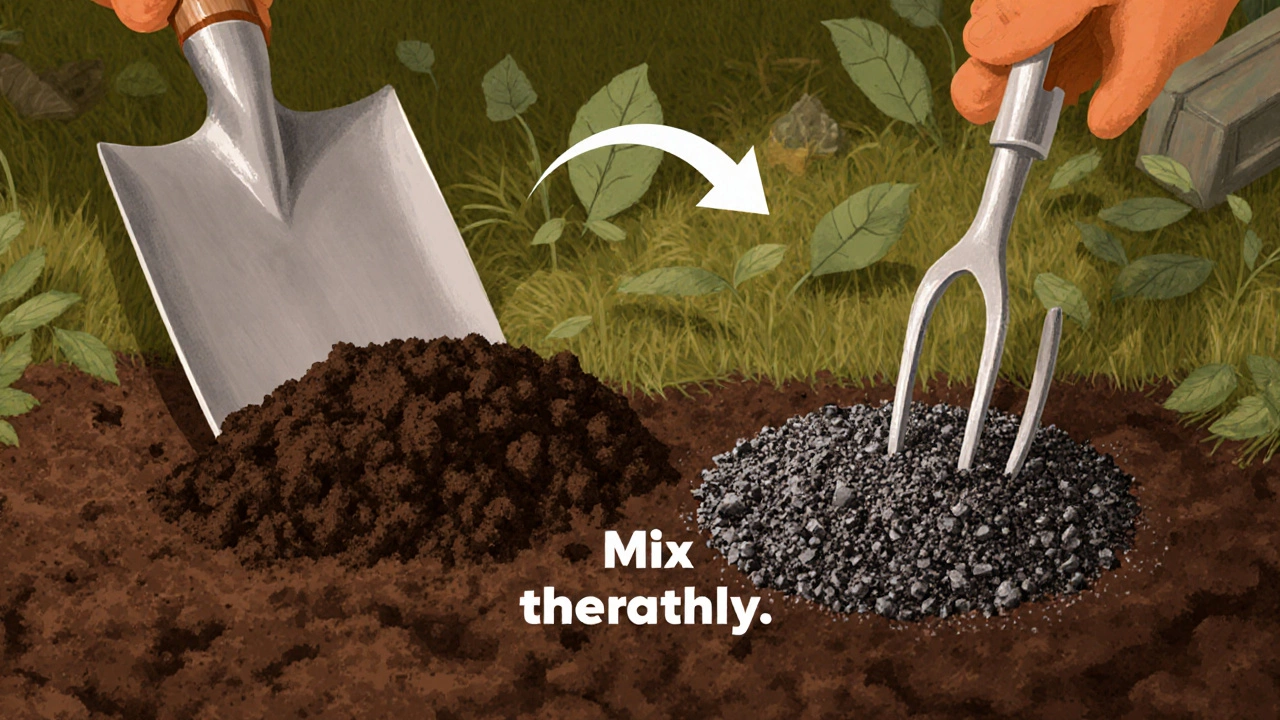
Step 4 - Balance pH and Nutrients
The pH determines which nutrients are available to plants. Most garden veggies thrive between 6.0 and 6.8.
If your test shows acidity (pH<6.0), spread lime at the rate recommended on the test report - usually 2-4kg per 10m². For alkaline soils (pH>7.5), elemental sulfur or iron sulfate can bring the level down.
When nitrogen is low, incorporate a “green” nitrogen source such as fresh grass clippings or a legume‐based compost. Phosphorus deficiencies can be addressed with bone meal, while potassium can be topped up with wood ash (provided the soil isn’t already alkaline).
Step 5 - Use Cover Crops and Mulch
Cover crops are living blankets that protect soil during off‑season periods. Popular choices in the UK include:
- Winter rye - adds organic matter and suppresses weeds.
- Hairy vetch - fixes atmospheric nitrogen.
- Phacelia - attracts pollinators and beneficial insects.
Sow the seeds after the main harvest, let them grow, then cut and turn them into the soil when they start to flower. This “green manure” adds both biomass and nutrients.
Mulching with straw, shredded leaves, or wood chips keeps the surface cool, reduces evaporation, and adds slow‑release organic matter as it breaks down.
Step 6 - Invite Earthworms and Avoid Compaction
Earthworms are natural aerators and processors of organic material. A healthy garden should have at least 5-10worms per square foot.
To boost worm numbers:
- Leave a thin layer of un‑compacted topsoil.
- Add coffee grounds, crushed eggshells, and leaf litter.
- Avoid synthetic pesticides that harm the soil food web.
Compaction traps air and water. Prevent it by:
- Walking only on defined pathways.
- Using a broad‑tipped shovel rather than a pointed one.
- Aerating the bed with a garden fork (insert and wiggle every 30cm).
Step 7 - Maintain and Monitor
Soil health isn’t a one‑off project; it’s an ongoing relationship. Set a quarterly reminder to:
- Retest pH and nutrient levels.
- Add a thin compost or mulch layer.
- Rotate crops to break disease cycles.
Keeping a simple log - date, amendment added, observations - will show you what works best for your micro‑climate.
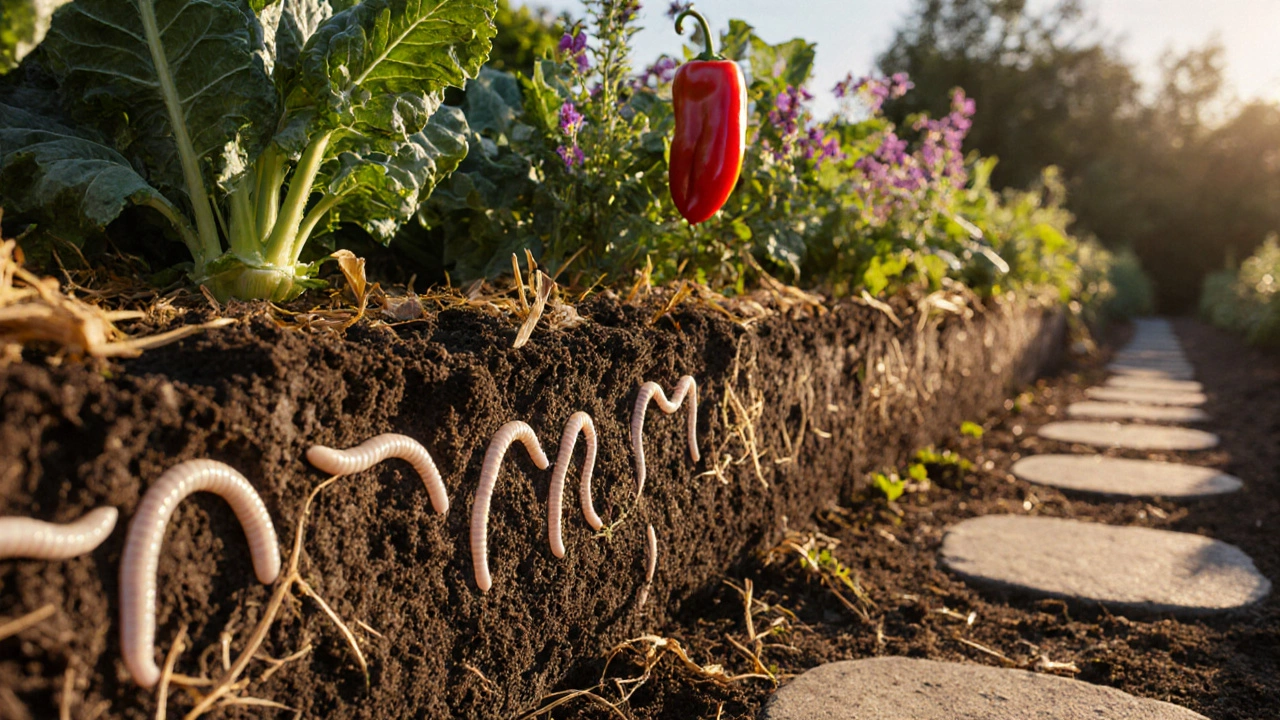
Comparison of Common Soil Amendments
| Amendment | Cost (per m³) | Main Benefits | Recommended Rate |
|---|---|---|---|
| Compost | £30‑£45 | Improves structure, adds nutrients, boosts microbes | 2‑3cm layer |
| Biochar | £80‑£120 | Retains water, reduces nutrient leaching, long‑term carbon sink | 5‑10kgm⁻² |
| Rock Dust | £25‑£35 | Supplies trace minerals, slowly raises pH | 3‑5kgm⁻² |
| Lime | £15‑£20 | Raises pH, adds calcium | 2‑4kg10m²⁻¹ |
| Mulch (organic) | £10‑£25 | Conserves moisture, suppresses weeds, adds organic matter | 5‑10cm layer |
Quick FAQ
Frequently Asked Questions
How often should I add compost to my garden?
A thin 2‑3cm layer each spring and autumn keeps organic matter levels high without over‑loading the soil.
Can I use kitchen waste directly in the ground?
Only if it’s well‑composted. Raw scraps can attract pests and create odors. Turn them into a compost heap first.
Is biochar safe for vegetable gardens?
Yes, when sourced from clean wood or agricultural waste. Mix it with compost to avoid nitrogen draw‑down during the first few weeks.
What’s the best cover crop for a small backyard?
Hairy vetch works well in tight spaces, fixes nitrogen, and can be cut and left on the surface as mulch.
How can I tell if my soil is compacted?
Push a garden fork into the soil; if it meets resistance within a few centimetres, it’s compacted. A simple aeration with a fork can relieve it.
Next Steps for Different Gardener Types
Beginners - Start with a basic soil test, add a 2‑3cm compost layer, and mulch. Re‑test next spring.
Experienced hobbyists - Incorporate biochar or rock dust, rotate cover crops, and keep a detailed amendment log.
Urban balcony growers - Use a light, pre‑mixed potting compost, add a thin biochar sprinkle, and place a layer of shredded newspaper as mulch.
Whatever your situation, the key is to treat soil as a living system rather than a static medium. Small, regular actions add up, and before long you’ll see greener leaves, bigger harvests, and a garden that practically takes care of itself.

